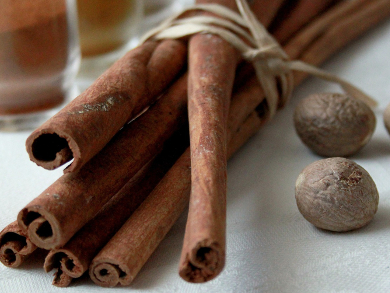Superhydrophobic surfaces have a variety of uses, e.g., for self-cleaning, antifogging, or antibacterial materials. Often, perfluorinated compounds or organosilanes are used to form a hydrophobic coating on such materials. However, they can be costly, toxic, and hazardous for the environment.
Mahmood Masoomi, Isfahan University of Technology, Iran, Nenad Miljkovic, University of Illinois, Urbana, USA, and Kyushu University, Fukuoka, Japan, and colleagues have developed alternative hydrophobic coatings made from naturally derived compounds found in cinnamon or nutmeg. The team used a liquid phase deposition of cinnamic acid or myristic acid to convert structured copper or silicone surfaces into superhydrophobic surfaces. During the process, ester bonds were formed between OH sites on the substrates and the acids.
The modified surfaces achieve contact angles for water droplets as high as 154° and 165° for cinnamic and myristic acid, respectively. This causes good superhydrophobic performance. According to the researchers, the approach could be used for the safe and environmentally friendly fabrication of superhydrophobic surfaces.
- Superhydrophobic Surfaces Made from Naturally Derived Hydrophobic Materials,
Seyed Mohammad Reza Razavi, Junho Oh, Soumyadip Sett, Lezhou Feng, Xiao Yan, Muhammad Jahidul Hoque, Aihua Liu, Richard T. Haasch, Mahmood Masoomi, Rouhollah Bagheri, Nenad Miljkovic,
ACS Sustainable Chem. Eng. 2017.
DOI: 10.1021/acssuschemeng.7b02424



